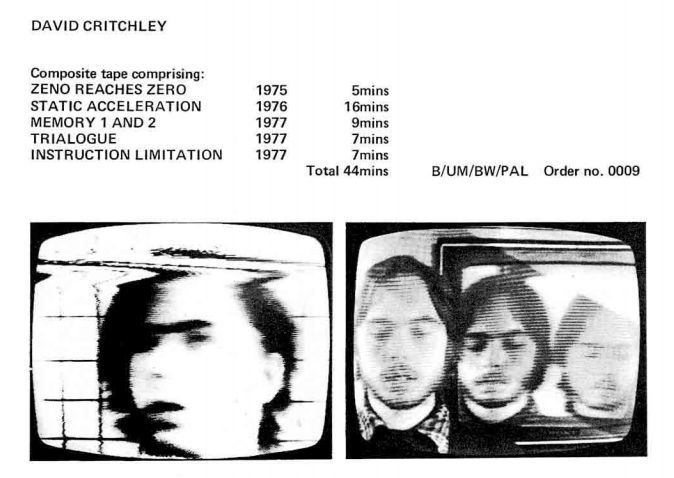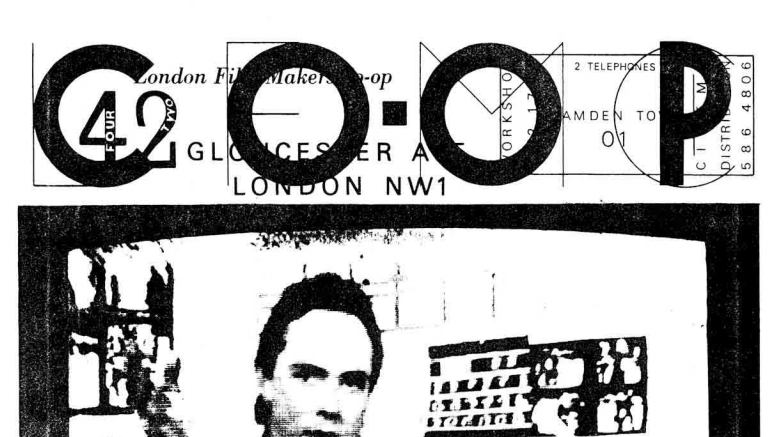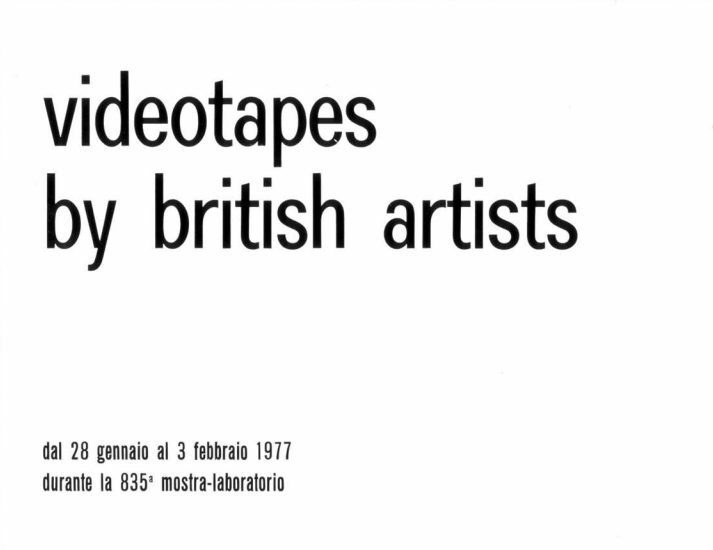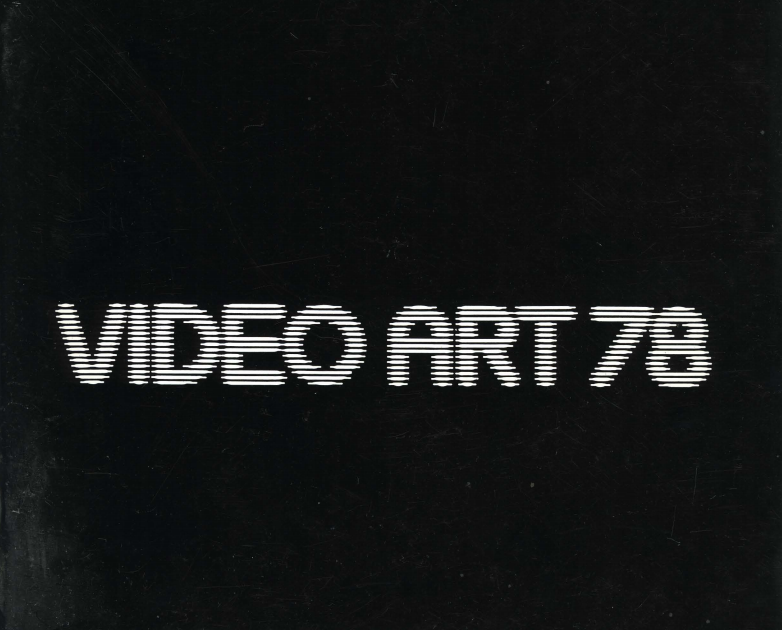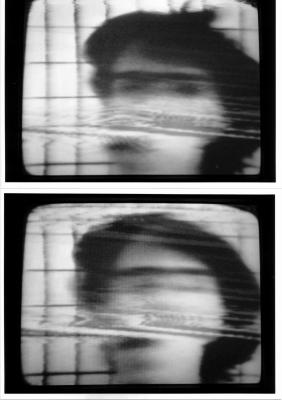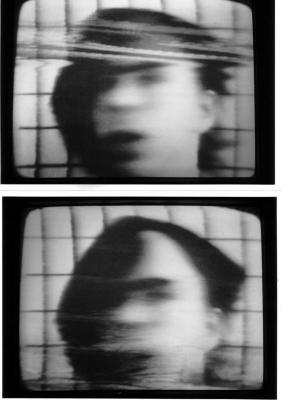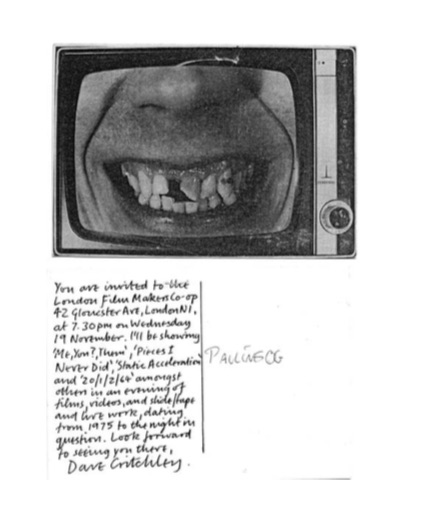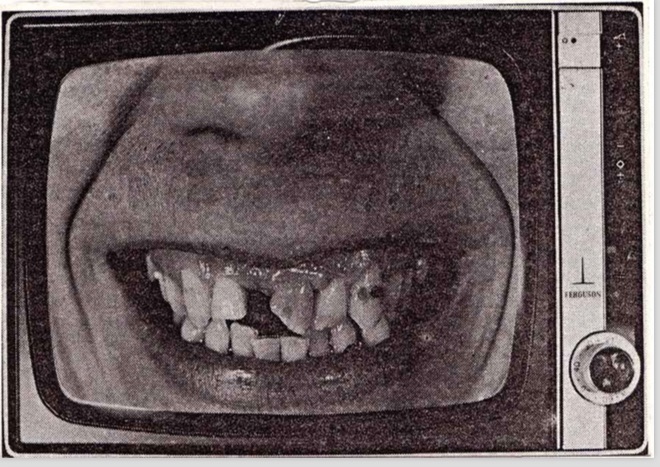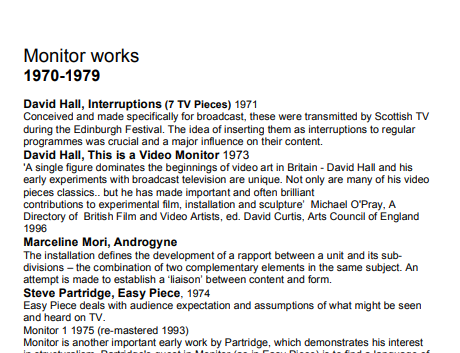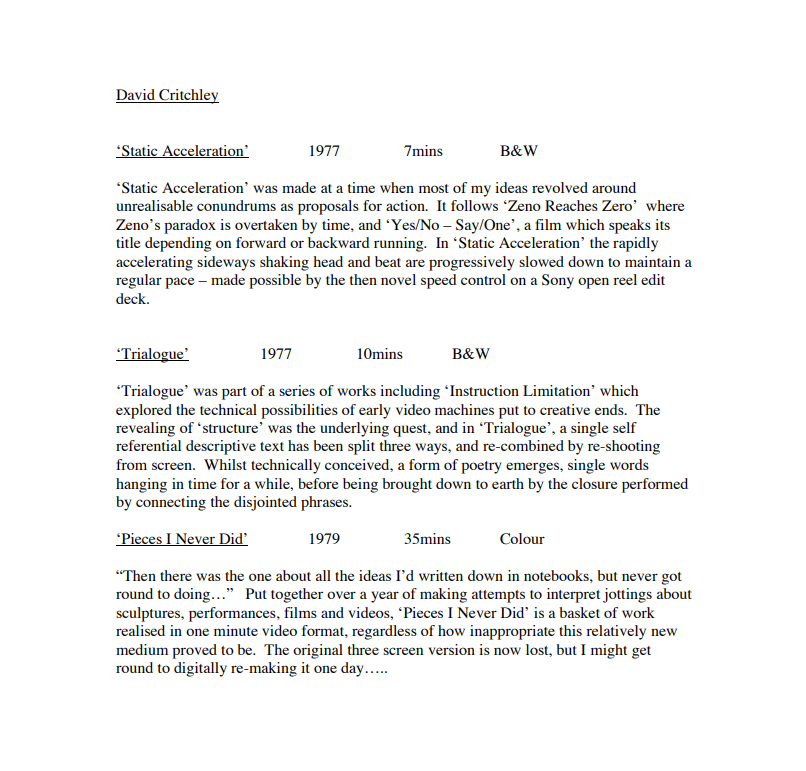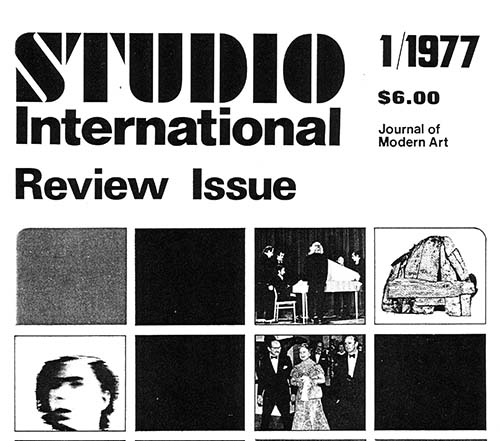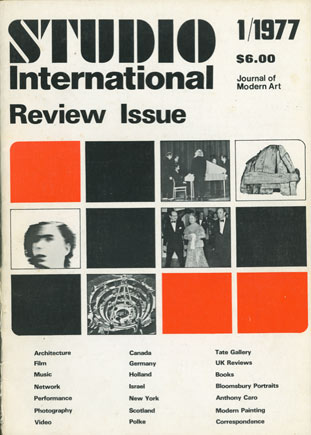Static Acceleration
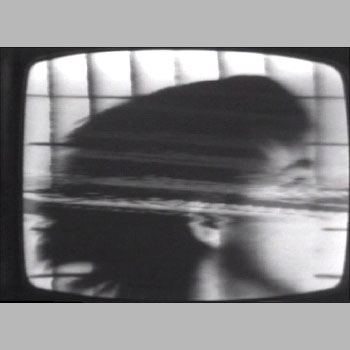
Creator:
Critchley, David-
This work is part of the rewind archive.
Duration: 13mins 25secs (Static Acceleration)11mins 14secs (Static Acceleration 2)
Year: 1976/1977
Original formats:1/2 inch EIAJ reel-to-reel
Media types:Video
Type of work:Single Screen
Videotape
Videotape single screen
Funding source: Self/State
First exhibited: Battersea Arts Centre and 2B Butler's Wharf
Technical details: Produced at Battersea Arts Centre/Oval House Video & Royal College of Art
“Static Acceleration was first made in a 17 minute version on a half-inch open reel edit deck. A relatively new medium for artists at that time, video was still in the process of being explored for its possibilities and limitations. This is one of a series of works I made in the 1970’s examining specific technical properties while also relating them to expressive or emotive content. While Static Acceleration has an emotive element that can only come from a viewer watching the tape, this piece can be described as analytical of the scanning process both in relation to the physical tape and the cathode ray tube.
A one-minute take was made of my head twisting from side to side at a rapidly increasing rate, stopping only after I went as fast as I possibly could. This was then re-recorded by camera from a monitor with the action being gradually slowed down to play at a constant rate in time with a series of loud regular beats. Using the alarmingly small tape-speed knob on the 1970’s Sony edit deck to progressively slow down the action, the movement of the head stretches the ability of the record-head drum to coherently represent the action, while also displaying its own technical limitations.” David Critchley -
-
Quotes:
Video Report
David Hall on Artists Video at The Galleries, Washington Tyne and Wear, 18-30 October 1976. First published in Studio International, Jan 1977One of the tapes that I was most impressed with was a new work by David Critchley, Static Acceleration. This began with a view of Critchley’s head against a grid-like (net?) background. Very slowly his head begins to turn from left to right, right to left and so on, apparently following the movement of a tennis ball in an indoor match (the sound is heard of the racquets hitting the ball). The speed of the ‘game’-and consequently Critchley’s head movement-progressively quickens until it appears as an irresolvable ‘blur’. The first section ends. A second is repeated, off the first. But this time as the movement quickens so Critchley simultaneously slows down the tape speed as it moves round the video-head drum. This effectively compensates for the acceleration, and the increasingly blurring image is examined at a progressively reducing pace. Where this might also be achieved in film by ‘step’ printing, or by reshooting off a variable-speed projector, awareness of the process as an integral part of the perceived work would not be as apparent, since in the case of video (that is the half-inch tape equipment used here) and using the ‘slow motion’ facility as Critchley did, the inherent deficiencies of that mode clearly indicate what is going on as scan fields (or ‘frame’ lines) break up the picture, drifting through top to bottom. Their increasing occurrence disturbs the image and converts represented action into pure videological experience at the surface of the screen. This piece simply, yet admirably, combines and manipulates time and fundamental aspects of the process in a carefully considered work only possible in, and about, video.
David Hall



